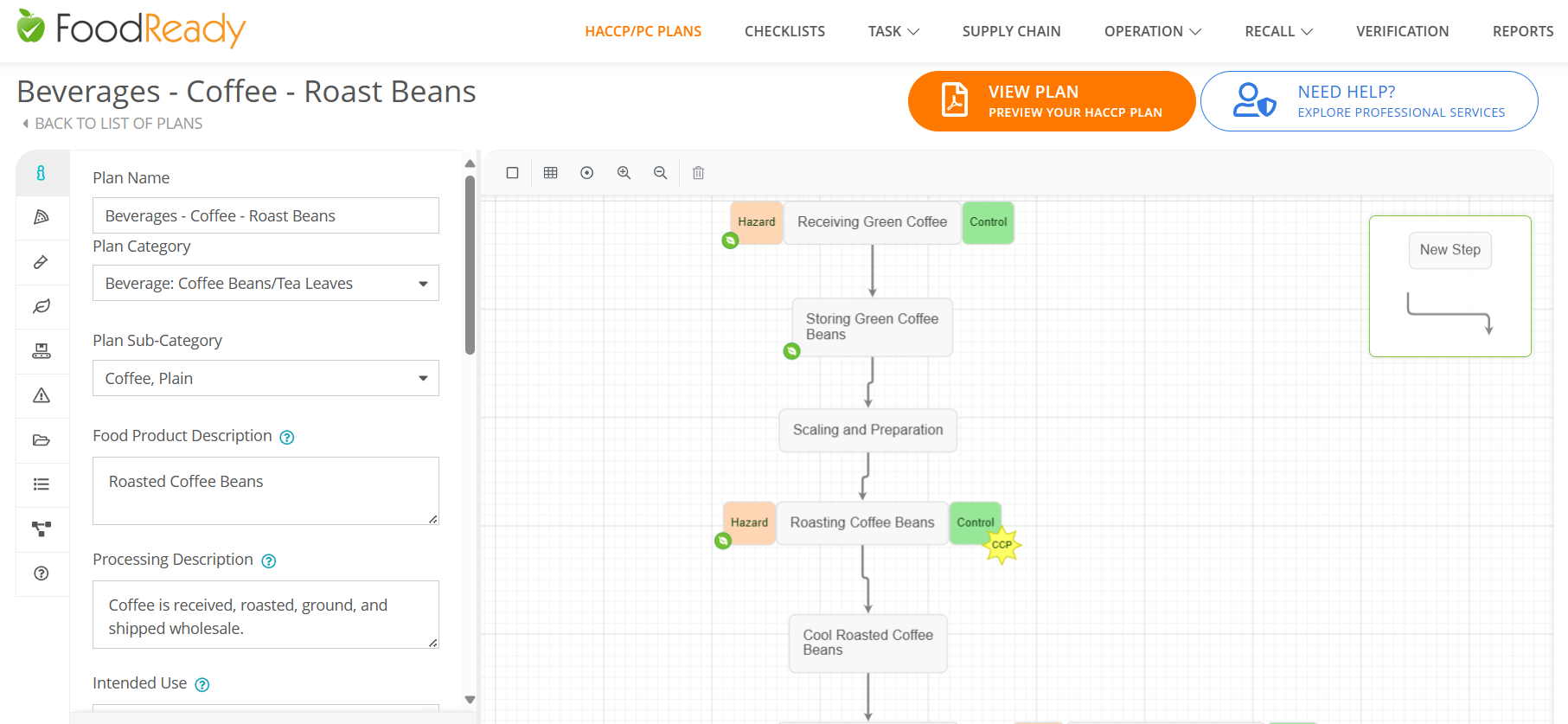Coffee HACCP Plan Guidelines
Are you a coffee producer or roaster looking for help customizing your HACCP plan or food safety template? This is the page for you.
Coffee HACCP Plan
Guidelines - Introduction
- Restaurants/Cafes in house
- Coffee roasters
- Coffee

Why HACCP /
Food Safety Plan?
The Food Safety Plan (HACCP or Preventive Controls) is not a stand-alone program, but rather part of a larger food safety system. The foundational programs that are part of the food safety system are frequently termed prerequisite programs. The term was coined to indicate that they should be in place before a HACCP plan is implemented in order to effectively manage risk from foodborne hazards. The Current Good Manufacturing Practice (GMP) regulations address requirements for many prerequisite programs. The regulation (117 Subpart B) that outlines the conditions and practices the regulated food industry must follow for processing safe food under sanitary conditions, including personnel, plant and grounds, sanitary operations, sanitary facilities and controls, equipment and utensils, processes and controls, warehousing and distribution, and defect action levels considerations. Elements of GMPs that are not covered in the Food Safety Plan are still required by regulations.
We Can Help You Develop Your
Food Safety Documentation
Suggested
Logs and Records
- Customer Complaints
- Corrective Action Forms
- Employee Training
- Food Safety Quarterly Audit
- Food Safety Checklist
- Raw Materials/Receiving Log
- Worker Illness
- Refrigerator Log
- Assembly Log
- Shipping Temperature Log
Suggested Supply Chain
Documents
- Food Safety HACCP or Preventive Controls Plan for each product
- Food Defense/Business Continuity Plan
- Validation of each product and/or process and Ready-To-Eat statements (if applicable)
- Certificates of Analysis (COA)
- Third Party Audit Certificate, Report & Corrective Actions
- Product Specification
- Allergen Grid / Statement
- SDS / MSDS Statement
- Country of Origin
Potential Hazards
Biological
- Vegetative pathogens:
- Brucella spp.
- Listeria monocytogenes
- Campylobacter spp.
- Pathogenic E. coli
- Salmonella spp.
Chemical
- Unintentional or incidental chemical contamination
- Environmental chemical contaminants
- Toxic elements and compounds
- Vitamin Toxicity
- Drug residues
Physical
- External contamination from rain water, bird droppings, vermins / rodents, or flying insects
- It is possible for bulk green coffee containers to contain stones.
- Glass (when product packed in glass)
- Dust and Debris
- Metal
Suggested Standard
Operating Procedures (SOPs)
- Using and Calibrating Thermometers
- Transporting Food to Remote Sites
- Cooling Potentially Hazardous Foods
- Cleaning and Sanitizing Food Contact Surfaces
- Storing and Using Poisonous or Toxic Chemicals
- Preventing Cross-Contamination During Storage and Preparation
- Receiving Deliveries
- Cleaning of Buildings and Facilities
- Allergen Control Program
- Washing Hands – To prevent foodborne illness by contaminated hands
- Employee Illness Program
- Using Suitable Utensils When Handling Ready-to-Eat Foods

Additional Components for
Compliance (Recommended)
Recall Plan
According to the Food Safety Modernization Act, Preventive Controls for Human Food regulation requires the development of a written Recall Plan when a hazard analysis identifies a hazard requiring a control. Recalls are actions taken by an establishment to remove an adulterated, misbranded or violative product from the market. In other words, a product for which FDA or a state could take legal action against the company would be subject to recall.
Verification
Verification is an important component of supply chain, sanitation, allergen and critical controls. It confirms that the Food Safety Plan is operating as intended. Validation confirms the effectiveness of the Food Safety Plan in controlling food safety hazards. The purpose of verification is to provide a level of confidence that the Food Safety Plan is: 1) based on solid scientific principles that are adequate to control the hazards associated with the product and process, and 2) that the plan is being followed correctly every day of operation.

Speak with our
Expert Consultants
Get a Free Consultation With Our Food Safety
and Quality Experts Today!


